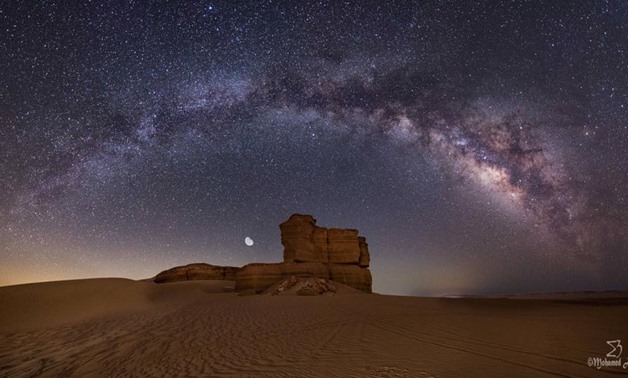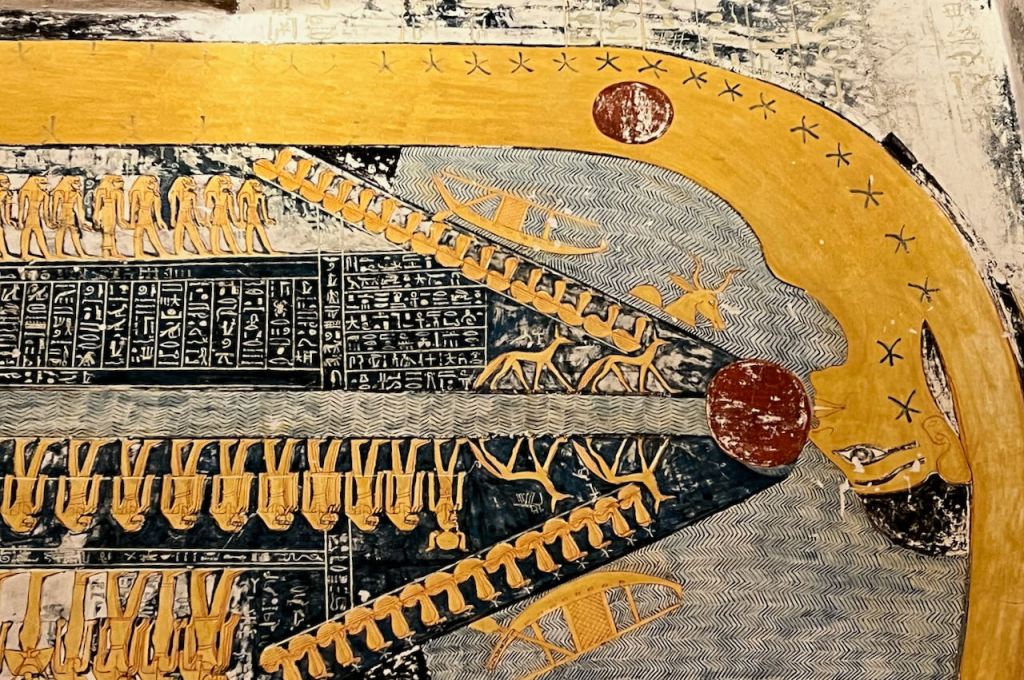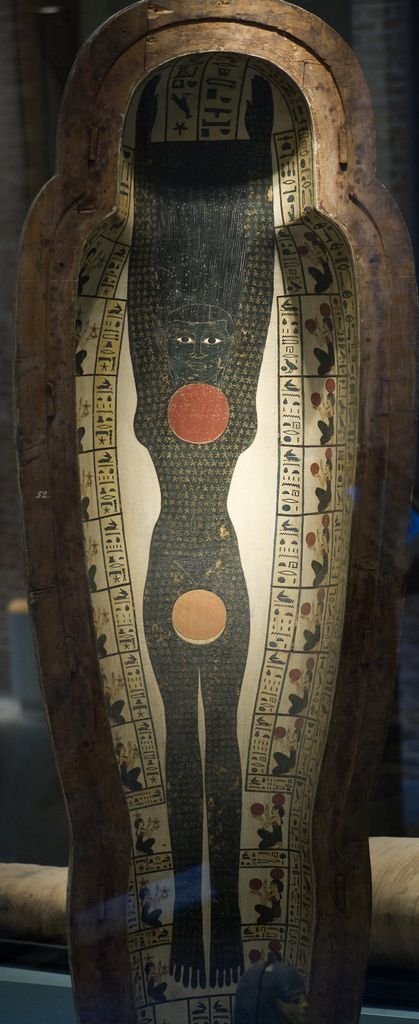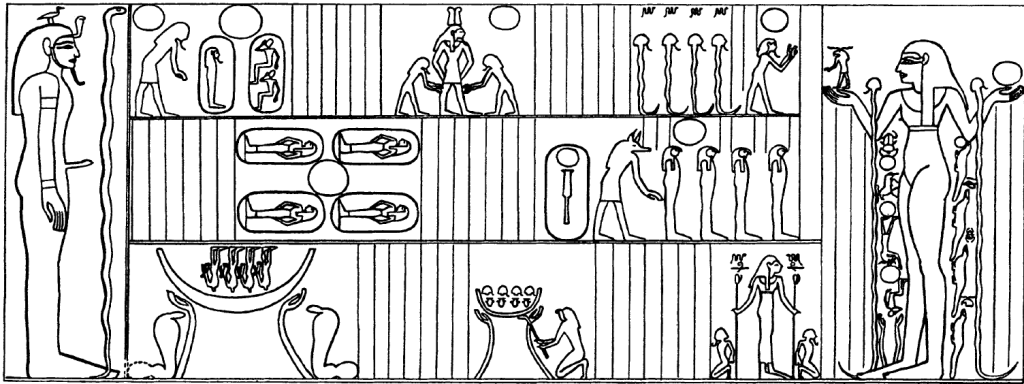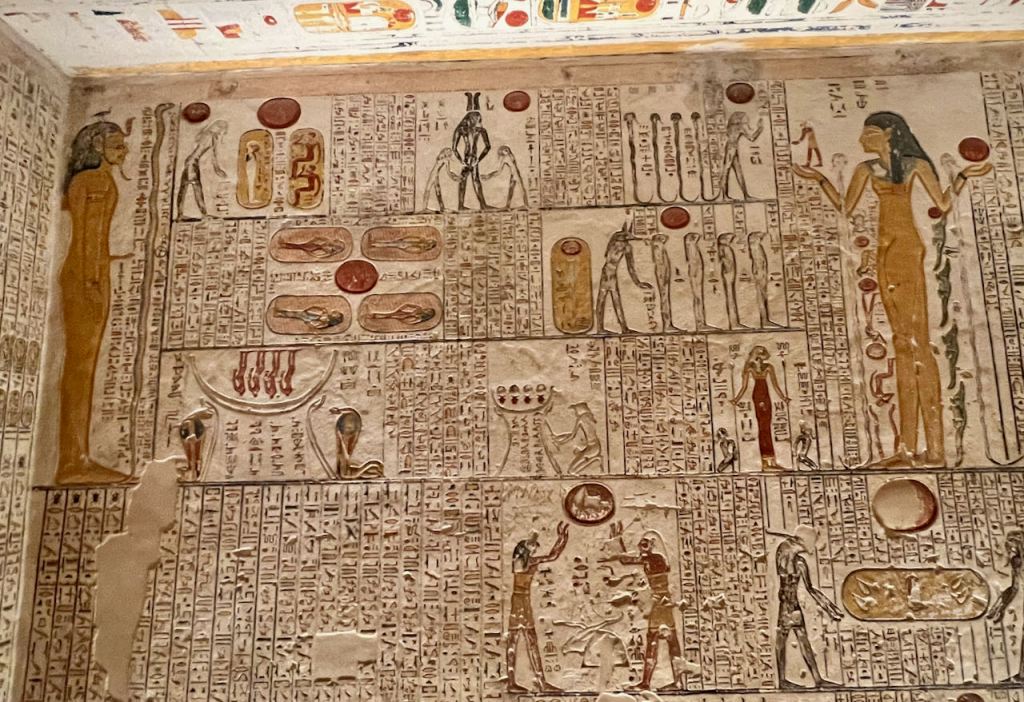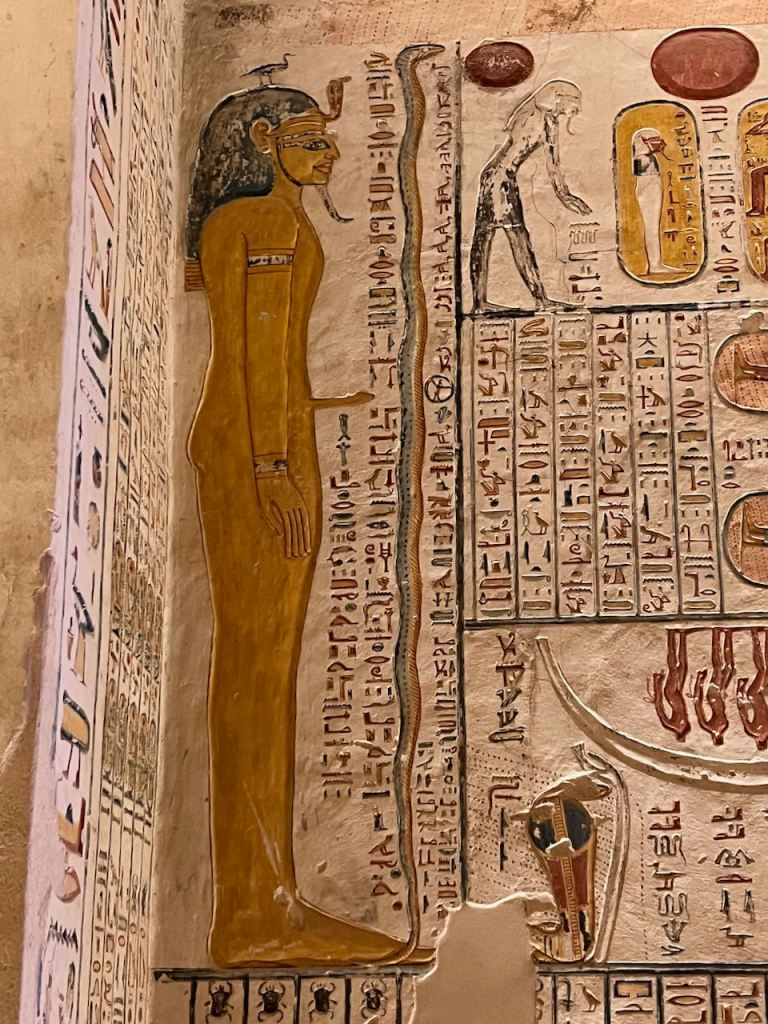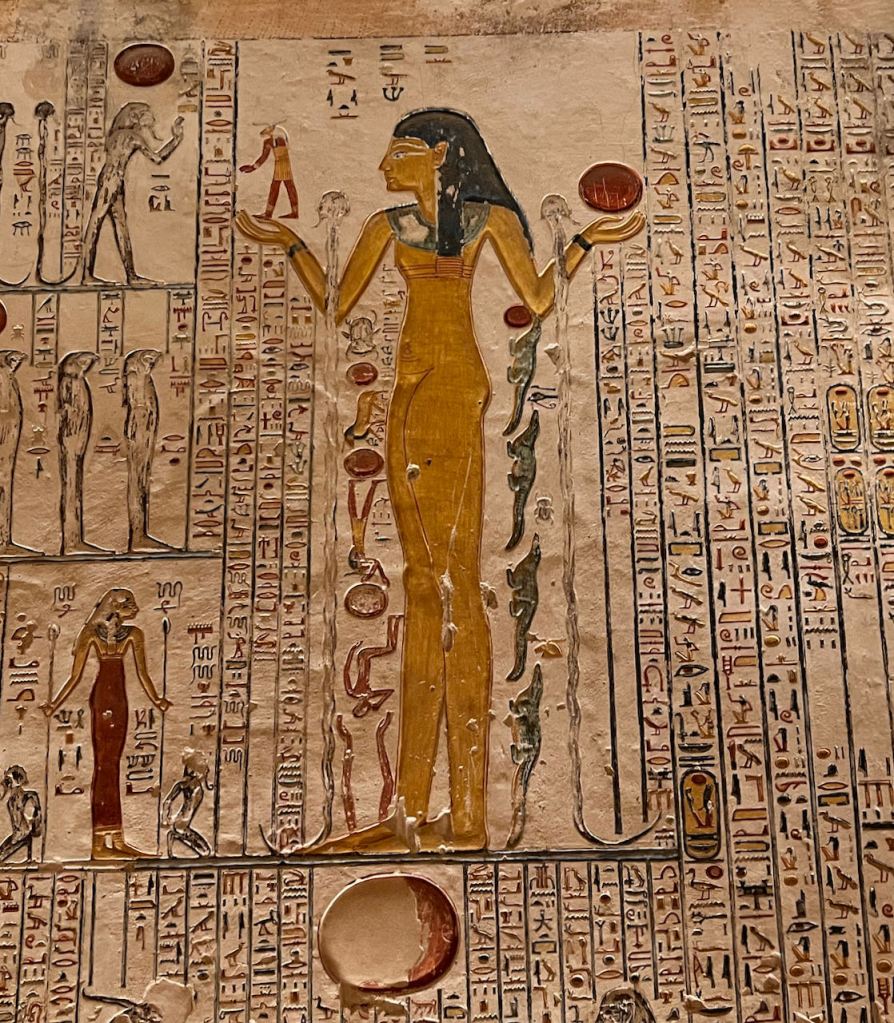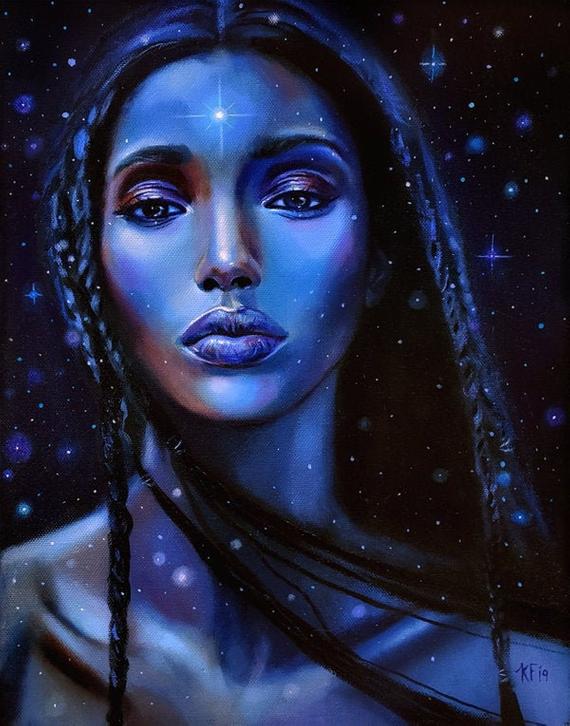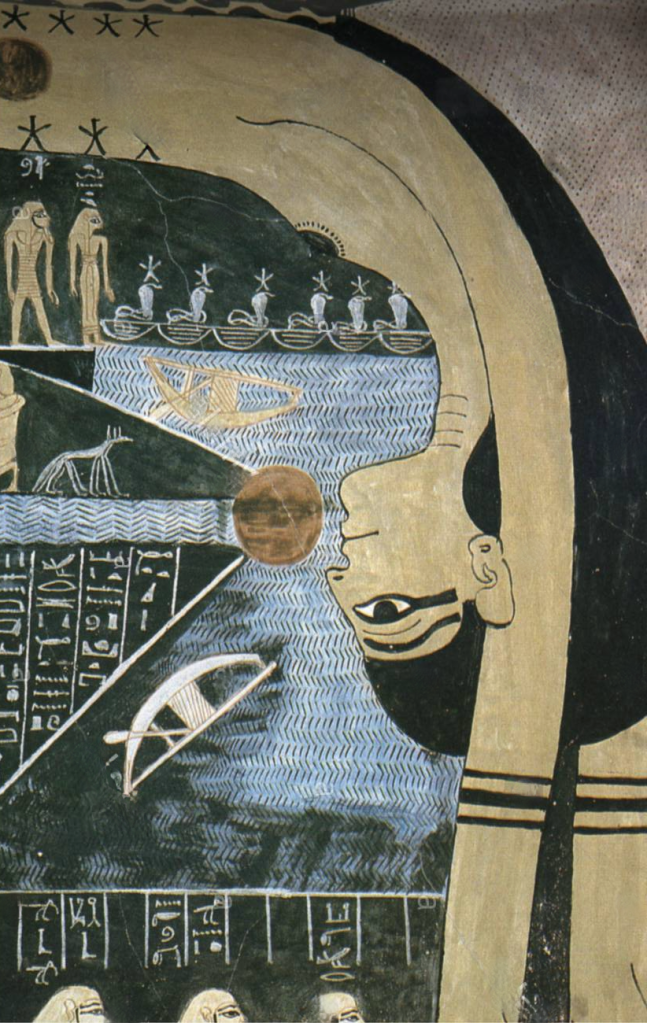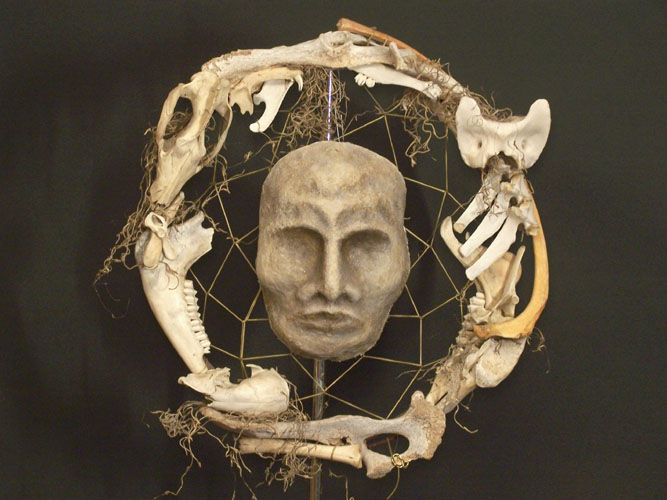After a few weeks, I’m finally getting back to Dendera and some of the texts inscribed on the walls of the small Isis temple there.
As you may recall, the temple is sometimes called the Birth House of Isis, which celebrates the birth of Isis from Her mother Nuet.
One of the temple walls says explicitly, “On this beautiful day, the day of the Child in His Nest, a great festival throughout the country, Isis is given birth at Dendera by Thoueris [“The Great One;” in this case, meaning Isis’ mother Nuet] in the House of the Noble One [the Noble One is Isis], a woman with black [kemet] hair and red [desheret] skin, full of life, Whose love is sweet.” Her mother Nuet says that She “makes every person rejoice to see You [Isis].”
With Her kemet hair and desheret skin, the Goddess encompasses the Black Land and the Red Land of Egypt. You may also recall from last time that this temple is very much concerned with the sovereignty of Isis over the entire land of Egypt.

Another temple inscription says, “Destiny distinguishes Her on the birthstones. Her heart is rich in all virtue. The south is given to Her until [that is, “as far as”] the [place of the] rising of the Disk, the north until the limits of Darkness. She is mistress of the sanctuaries of Egypt with Her son and Her brother Osiris.” She is “Queen of Upper and Lower Egypt.” She is “Mistress of the cities and Sovereign of the Nomes, the Sovereign of Sanctuaries.”
As this is the temple of Isis’ birth, we have many Birth Goddesses present, including a form of Isis Herself. We find Meskhenet, the Birth Goddess Who sometimes takes the form of a personified birth brick, in four different forms. Meskhenet the Great in the Mound of Tefnut is Tefnut Herself. Meskhenet the Great in the Mound of Birth is Nuet. Meskhenet the Beautiful in the Place of Nativity is Isis. And Meskhenet the Excellent in the Temple of the Menat Necklace is Nephthys.
However, in a different part of the temple, the four Meskhenets are Djedet (Djedet is the principle Goddess of the town of Djedet, also known as Hatmehyt. Learn about Her connection with Isis here.), Nuet, Meskhenet the Beautiful in the Enclosure of Life, Who is Isis, and Meskhenet the Excellent in the Heart of the Land, Who is Nephthys; She is also called Efficient (Akh) for the Daughter of Geb (although Nephthys is Herself a Daughter of Geb, this likely means that Nephthys is akh for Isis).
And speaking of Nephthys, here are some more of Her epithets found in this Isis temple: She is The Excellent and The Efficient. She is the One Whose Breast is Shimmering. She is the One Whose Face is Beautiful, the Mistress of Adornments, and Mistress of Light in the Cavernous [Zones]. (See? Nephthys is not always the Dark One!) And both Sisters’ mother Nuet is called The Unknowable. Which I love so much. All my Goddesses are, ultimately, Unknowable.
This small temple is the source of one of the inspirations for what will be one of our ritual acts at SunFest, our local summer solstice festival in June. There is a section of a wall labeled “Spreading a dusting of gold and green earthenware on the ground at the Mound of Birth.” The Mound of Birth is the place where Isis is born. It is also the place where the entire world is born, when it first emerges from the primordial Waters. It is well to honor this sacred place within the temple. Indeed, all temples were considered to be the Primordial Mound where the world first emerged from the Waters.
What caught my eye in this case was the idea of scattering gold dust and powdered green faience in this holy place as a consecration. It reminds me of the colored powders scattered during the Indian Holi festival. During our Festival of the Return of the Wandering Goddess, we’ll be doing something similar and scattering dried flower petals in the path of the Returning Goddess to consecrate the Way of Her Return. If we happen to get some on each other in the process, oh well.
While Isis, in Her birth temple, is said to be the First One Born Among the Goddesses, nevertheless, Hathor as a Cow Goddess is there at the same time and licks the baby Goddess Isis on the day of Her birth—just as mother cows lick their calves at birth. (Of course, Nuet can also be a Cow Goddess; She is, in fact, the Cow Goddess referred to in the famous text known as The Heavenly Cow.)
At Isis’ birth Hathor sings, Khnum makes the “Divine body” of the Goddess, that is, Her sacred temple image. The ka and the hemsut (feminine fate spirits associated with the ka) rejoice as They receive Isis’ Mysterious Image, that is, Her temple statue. Nekhbet as the Uraeus vows to sit upon Her brow to protect Her. Other Goddesses also vow protection for Isis as Thoth promises that He will write Her stories.
One of the parts of the temple is called the Sanctuary of the Vase, which the king made for Isis “to protect Her body in his sanctuary in joy, to preserve Her Divine Images there.” Isis is said to enter “Her chapel in the Land of Atum, Her heart is glad to enter there.” The Sanctuary of the Vase then is the storage area for Isis’ sacred images and the Goddess is pleased with the images and so She happily enters into the image and Her sanctuary. The king has made the sanctuary for She Who is Full of Life and the images “are excellently chiseled by the work of the sculptors, enhanced with gold to perfection.”
Here’s another thing I found interesting. One temple text says that the bas (manifestations/powers/a mode of Divine Being) of all the Deities follow the ba of Isis and They “melt” over Their effigies on the walls in joy.
I am very much intrigued by the idea of Isis’ ba—an aspect of Her Divine energy that indwells Her sacred image—melting over the image. Sometimes the Divine ba is said to swoop down from the heavens like a bird to alight on the sacred image. But melting over and into it—infusing the image with Her ba—really catches me.
I shall definitely use that visualization the next time I invoke Her to the sacred image that dwells in my home shrine for Her. And that is something else to note. We don’t just invoke Our Divine Ones to Their sacred images and call it done. Each time we invoke Her, She comes anew. Each time we ask Isis to come to us, come to us, She once again “melts” over Her sacred image.
That’s as far as I’ve gotten in my books for now. I’ll share more of what I learn as I go along.



























